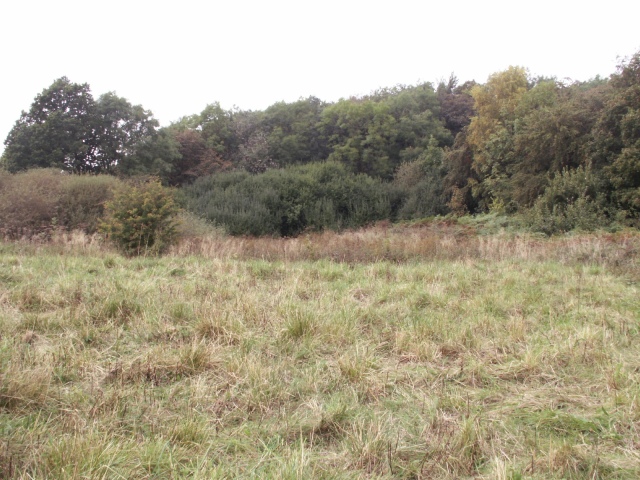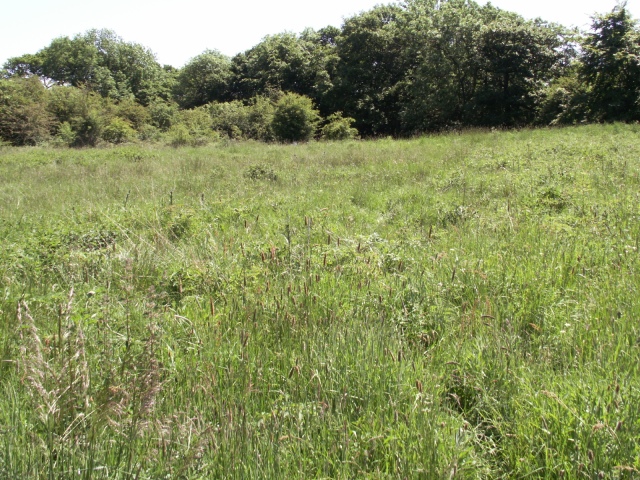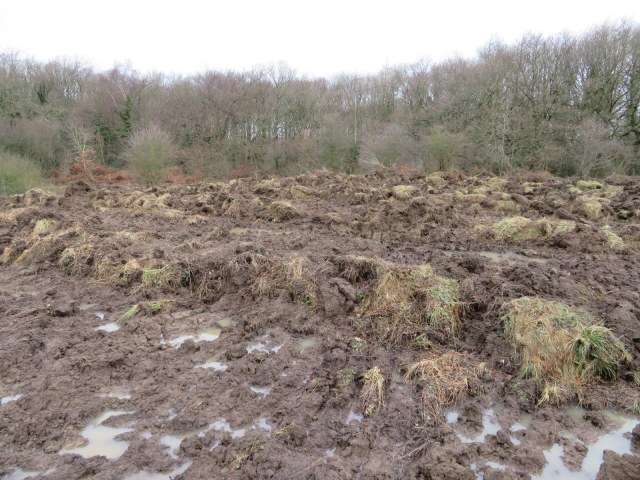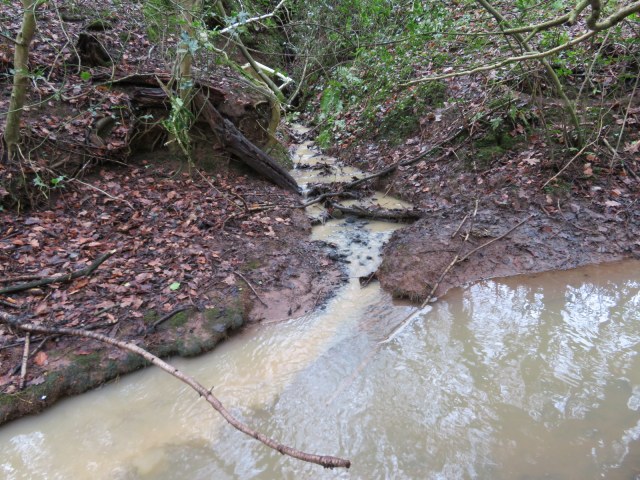On 26th January I went to visit a site I first surveyed in 2007 as part of a Local Wildlife Site review; I went because I had been informed it had been recently damaged by the landowner.
There are records of it from a comprehensive 1992 survey that said the site was grazed and gave it the National Vegetation Classification (NVC) of MG5 (a National Priority habitat). The grassland community is on ridge and furrow (which shows up on LIDAR data) suggesting the plant community there had been present since the middle of the 14th Century (when the Black Death hit the area, much arable land was abandoned through lack of manpower to cultivate it and, for whatever reason, was never ploughed again).

Our 2007 survey was brief and we surveyed late in the year and so not all species present were able to be seen, but it still met the criteria for Local Wildlife Site designation. The site was no longer grazed and was looking rather overgrown but was in Countryside Stewardship, a national scheme that is sympathetic towards management of ancient grassland. We heard from a local man who had decided to voluntarily cut and remove the hay of the most species-rich area.
We were able to carry out a more comprehensive survey the following year as part of a Heritage Lottery Funded project ‘Hunt for Lost Meadows’ – the NVC classification was MG9, a plant community that un-managed MG5 can change towards when ungrazed and not cut for hay.

Over the next decade the volunteer sympathetically managed the site (cutting and removing the hay) causing a change in the relative proportions of the various species and the grassland community classification will have changed back towards MG5.
And then this year a new landowner did this:-

There is absolutely nothing I can do about this happening.

All the volunteer’s work lost.

I can’t even try and repair the damage – and I’m sure I’m not welcome there (there was sign suggesting people might like to keep out).
The government knows species-rich ancient grassland is still being lost – even leaving aside that vast ‘97% lost since the 1940’s’ figure. In this paper from 2015 on semi-natural grassland studied from 1960 to 2013 https://www.sciencedirect.com/science/article/pii/S2351989415300184?via%3Dihub , 92% survived because they were within a SSSI, outside of an SSSI designation only 27% survived.
Perhaps as a response to this knowledge, in November 2014 the government published revised criteria for creating Lowland grassland SSSIs http://jncc.defra.gov.uk/page-2303 (scroll down for .pdf) and there is a recognition that many sites containing the grassland community MG5 are small and at 4.10 it states that for grassland communities that are rare (less than 10,000 ha in Great Britain, which includes MG5) “…the presumption is that all examples which are at least 0.5 ha should be selected for notification…”.
Natural England Technical Information Note TIN147 http://publications.naturalengland.org.uk/publication/6626052 states there is less than 6000 ha of MG5 remaining of which 55% is within SSSI designations. As 80% of Lowland Meadow (MG4, MG5, & MG8) sites are less than 5 ha this suggests that a minimum of 600 new SSSI’s are due to be made as a consequence of the new guidelines, though I suspect the number would be at least 1500-2000 for MG5 alone as most sites will be around the minimum size.
If the Natural England had acted on their own guidelines then the destroyed site in my area (less than 1 ha but more than 0.5 ha) should have been a SSSI, in which case it could have been saved or at least the landowner prosecuted (the government publish figures on damage to SSSIs – here a .pdf on the year 2015-6 https://www.gov.uk/government/uploads/system/uploads/attachment_data/file/570747/enforcement-annual-report-2015-16.pdf) .
Why aren’t the government implementing the new guidelines? I emailed enquiries@naturalendland.org.uk on 31st January to ask “what is your timetable to have all MG5 over 0.5 ha surveyed and designated as SSSI as outlined in the guidelines?”. On 15th February I forwarded the message to them as I had had no reply and then I decided to ring and chase up the answer; I was told it would appear in a few days. As it hadn’t appeared on the 23rd February I’ve decided to publish this blog and I’ll deal with their answer separately when it appears.
Anyway – absolutely livid as I am about the loss of another one of the Ancient Grassland sites local to me during my watch, there is nothing I can do about that site now. However, I can tell other people that it has happened and remind you that the government’s own guidelines have committed them to creating more new grassland SSSIs, and then monitoring them, in order to safeguard ancient grasslands for future generations. I can also say I see no evidence of them doing this.
If you are thinking ‘but the prime minister said we are going to make new meadows’ then Natural England’s Note TIN147 states clearly “Typically neutral and calcareous grasslands that closely resemble ancient semi-natural grassland take a minimum of 100 years to develop” which is why it is so very important to conserve our ancient grassland first and where else would the seed come from to create the new meadows?
NOTES
It’s the second Ancient Grassland site that I know of to be damaged in my area in the last two years; yet another (on visual appearance of what was left) has also been ploughed and re-seeded but it was unfortunately un-surveyed, so I have no technical evidence.
I have informed Natural England about the site damage (local team who try really hard within the legal limitations that they must work) but as the site is less than 2 ha it is unlikely to be covered by any legislation that could punish landowner for doing this. Also, they are short-staffed at the moment so there will be a delay before they are able to investigate. [A Lords Select Committee asked on 5 Dec 2017 question Q178 about whether the recent cuts have affected the ability to deliver…yes, yes they have http://data.parliament.uk/writtenevidence/committeeevidence.svc/evidencedocument/natural-environment-and-rural-communities-act-2006-committee/natural-environment-and-rural-communities-act-2006/oral/75680.html ]
I’ve informed my Local Nature Partnership ‘Natural Assets’ sub-group on which I sit, but there are no legal obligations on landowners who have designated Local Wildlife Sites on their land, so nothing can be done.
I’ve informed the group who maintain our local HER register as the landowner’s action has resulted in loss of medieval Ridge and Furrow, but the council where the site is can no longer afford to contribute towards running costs of that group so I don’t know whether the group still record anything in this area – anyway they have no powers to do anything about the loss. [update 22 Feb; I had a reply and that council don’t fund them anymore and so they don’t maintain the HER in that area, so I will now have to find if the HER register is maintained at all in that council’s area]
I have also informed the Incident Hotline of the Environment Agency (https://www.gov.uk/report-an-environmental-incident ) due to silt from ditches being offloaded into the adjacent beck (they have been excellent in explaining to me what they can do, have already investigated (someone lived locally) and will take what limited action they can, which is initially to write a letter and then possibly another letter).
My local wildlife trust were great for advice and very patient whilst I ‘vented’ in the office, but there is nothing they can do.
English Heritage don’t deal with anything that is biodiversity related, even if it is part of our heritage and indeed about as English as it gets, so there was no point in even contacting them.


I can feel (and share) your sense of devastation and raging frustration at the loss of this meadow and the absolute ‘black hole’ of legislation, funding, resources, or will, to protect these exquisitely important habitats. Protective legislation simply does not keep up with practice (another example would be tree protection orders, which are impossible to enforce in the time it takes for a man with a chainsaw to fell a 1,000-year-old oak), but thank you for explaining so well (with links) exactly what’s in place.
thank you for reading – the more people that know the better. I do think native plant communities have not had the public investment/protection that they ought to have.
And I do always try to add links so people can check themselves the sources of my information, which I think is very important.
Pingback: Health and Harmony? Government consultation on future of agriculture reveals no new detail | a new nature blog
Pingback: Bringing Ancient Grasslands into the heart of our towns and cities. | The Intermingled Pot
Pingback: Keeping Count | The Intermingled Pot